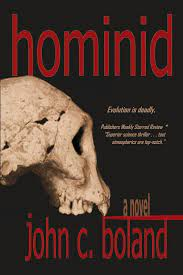Amazon.

The word has several meanings. It was a legendary race of female warriors whom, the ancient Greeks believed, raised havoc in Russia (where are they when we need them now?) (I always thought of an Amazon woman as “statuesque” and “shapely,” but apparently “strong” and “shrewish” come closer.) There is the tropical bird, a usually green parrot in South America, which also is home to another Amazon: the world’s largest and, recent research suggests, longest river, barely beating out the Nile in Africa.

So when Jeff Bezos chose a name for his new online bookstore in 1994, he was thinking big. He soon expanded the company to include other retail products, metaphorically (though probably unintentionally) imitating the branches of the Amazon River. After a few years of struggle and near bankruptcy, the enterprise began seeing money flow into it like the mammoth river on its course to the Atlantic Ocean. Bezos stepped down as CEO last July after responding to heavy criticism that he paid his employees less than a living wage; he upped the minimum salary to $15. Meanwhile, he wallowed in wealth that reached $200 billion at one point, before dropping back a few tens of billions as Elon Musk rode his Tesla to status as the world’s richest person at a currently estimated $214 billion.

Bezos opened Amazon as a digital bookstore. Today, digital and print books combined comprise less than 10% of Amazon sales, the record keepers say, adding that the number still represents huge income because Amazon’s total sales are more than $280 million a year. It makes for a complexity that, in my opinion, Amazon is struggling to manage. How so? Funny you should ask.

In early February, I published a Second Edition of my novel Blood on Their Hands, previously traditionally published by TouchPoint Press with a contract expiration date last October. In the four-plus months since then, I have had an estimated 75 – I lost count at 51 – email, mostly, and phone consultations with Amazon Kindle Direct Publishing customer service, the Copyright team, the Community team (in charge of reader reviews), and the Author Central department.

When the book was posted on Amazon, I was happy the months-long process of having a new cover made, deleting some unnecessary details from the text, having the book reformatted, and completing the Amazon KDP submission process was finally over. A few days later, I accessed the book page, and my Second Edition was gone; only the first edition appeared. I emailed customer service, which told me a third-party retailer was advertising its remaining copies.
I planned to write this post after all the problems with Amazon had been resolved. But I don’t think they will ever end. Just when I assume everything is straightened out, a new issue pops up.
It didn’t make sense that any seller had copies remaining after four months, because the book was print-on-demand. (Apparently, however, sellers buy a supply of books from the publisher for reselling.) I asked a KDP agent about this, and was advised that I might want to file a copyright infringement claim against the original publisher for republishing. So I sent five email and phone messages to the publisher asking for confirmation that republication was not occurring. I never received a response, and filed the claim, deciding the publisher was guilty. I tried once more to reach this person, who told me republication had not occurred.

But Amazon already had taken the original edition down. Fine, except that the details page containing the 45 customer reviews with a 4.2-star average went down with it. I was able to retract the claim, and the first edition was restored. But only nine of the reviews reappeared, the rest hiding on Author Central. Thus began a process lasting almost a month, involving a plethora of emails and phone conversations, in which agents kept promising the reviews would reappear. Finally, a supervisor took charge, and the reviews were transferred to the book sales page.
Except one was still missing, and the star average dropped to 4.1. I was referred to the Community team, which didn’t restore the review, but did cause the two editions to become unlinked, so only the first edition was appearing again. I complained, and an agent quickly fixed it. But almost two weeks later, Community has communicated nothing to me about the missing review and the drop in star average. A new, five-star review appeared, but the average remained at 4.1.

I noticed that the details for the Kindle book showed it to be one page in length. That, I was told, was why two of the three categories for the book were for 15-minute reads. An agent fixed the page length, and the two categories were replaced. But, following the online advice of a marketing expert, I decided to list 10 categories, the limit allowed. The process is confusing, and I asked for help from a KDP agent. We identified the 10, and she said they would be posted. That was a week ago, and nothing has happened.
Stories of problems authors have with Amazon are legion, including a New York Times piece last December detailing the lawsuit author John C. Boland filed, accusing Amazon with failure to police the sales of his science thriller Hominid, listed as published in 1602 with prices of well over $900. Some third-party retailer was committing fraud, and Amazon ignored it, Boland charged. The Times was highly critical of Amazon’s book operation.
No wonder. An early review of Blood on Their Hands was rejected because, Amazon told the reviewer, he hadn’t spent 1,500 rubles on Amazon in the previous year. The man was from West Virginia.
My travails with Amazon’s book division are much more involved, but by now, readers’ eyes likely are glazed over. Suffice it to say that the operation is a mess, but it monopolizes book sales. Authors have no choice but to tolerate its incompetency and indifference. So we beat on, boats – or is it books – against the current …
